 A home is an investment, so it is important to treat it as such. The best time to capitalize on a home’s value is when it is sold. Therefore, it is important to take care of it with some simple home maintenance tips. There is a common misconception that if something is working well, it does not need to be fixed; however, it is always better to prevent problems from happening than to fix them after they have appeared. The average homeowner should spend between one and four percent of a home’s value per year to keep it in excellent condition. There are several key home maintenance tips that homeowners need to keep in mind.
A home is an investment, so it is important to treat it as such. The best time to capitalize on a home’s value is when it is sold. Therefore, it is important to take care of it with some simple home maintenance tips. There is a common misconception that if something is working well, it does not need to be fixed; however, it is always better to prevent problems from happening than to fix them after they have appeared. The average homeowner should spend between one and four percent of a home’s value per year to keep it in excellent condition. There are several key home maintenance tips that homeowners need to keep in mind.
Paint The Interior And Exterior
There is never a second chance to make a first impression, and a home’s paint job will be responsible for a significant portion of that first impression. A fresh coat of paint can make a home look like new. At the same time, it is usually better to hire a professional to paint the house to make sure it looks as great as possible.
Clean The Gutters And Roof
Many homeowners forget about the roof of the house because it is difficult to see the entirety of the roof from the ground. On the other hand, a damaged roof can lead to expensive repairs, particularly if the roof begins to leak. Therefore, homeowners need to clean the gutters and roof regularly. That way, water has an easier time running down the roof, through the gutters, and away from the house. This can prevent serious problems from happening.
Stay Up To Date On HVAC Maintenance
Homeowners should service the furnace and ductwork regularly. It can be expensive to replace an HVAC unit, and routine maintenance is critical for making sure it lasts as long as possible. Furthermore, an efficient, working, maintained HVAC unit can be an attractive asset to a potential buyer. Service the HVAC unit at least once per year.
Take Care Of The House
These are a few of the most important home maintenance tips that homeowners should keep in mind. They can go a long way toward preserving the value of a house.

 If you’re planning to remodel or renovate your home in the near future – whether to provide a better living environment or as part of a house flip – you’ll need to find a way to pay for your home improvements. There are several different possible sources of renovation money, each with their own advantages and disadvantages. One option that is gaining popularity is mortgage refinancing.
If you’re planning to remodel or renovate your home in the near future – whether to provide a better living environment or as part of a house flip – you’ll need to find a way to pay for your home improvements. There are several different possible sources of renovation money, each with their own advantages and disadvantages. One option that is gaining popularity is mortgage refinancing. Smart homebuyers know that mortgage rates and terms can vary widely among lenders. While your credit score and history will influence what rates and terms you’re offered, there’s a wide range of flexibility, which means shopping around for a pre-approval makes sense. At the same time, it’s important to minimize credit inquiries to protect your credit rating.
Smart homebuyers know that mortgage rates and terms can vary widely among lenders. While your credit score and history will influence what rates and terms you’re offered, there’s a wide range of flexibility, which means shopping around for a pre-approval makes sense. At the same time, it’s important to minimize credit inquiries to protect your credit rating. When delving into the world of real estate and investment property, there are many terms that will come up that require further explanation. Whether you’ve never heard the phrase ‘home equity’ before or you have a little familiarity, here are the ins and out of what it means and how this asset can help your financial outlook.
When delving into the world of real estate and investment property, there are many terms that will come up that require further explanation. Whether you’ve never heard the phrase ‘home equity’ before or you have a little familiarity, here are the ins and out of what it means and how this asset can help your financial outlook.
 When delving into the realities of home ownership, there can be many factors involved that make it difficult to determine what you need to know and what can wait until later. If you happen to be a first-time buyer who’s looking for the best tips for purchasing a home, look no further than the following three pointers to set you on the right path.
When delving into the realities of home ownership, there can be many factors involved that make it difficult to determine what you need to know and what can wait until later. If you happen to be a first-time buyer who’s looking for the best tips for purchasing a home, look no further than the following three pointers to set you on the right path. Potential homeowners need to understand the different types of loans available. This is a major financial decision, and it is important to evaluate the benefits and drawbacks of each option. The majority of home loans fall into two categories. The first is called a conforming loan and the second is called a jumbo loan. There are a few significant differences between them.
Potential homeowners need to understand the different types of loans available. This is a major financial decision, and it is important to evaluate the benefits and drawbacks of each option. The majority of home loans fall into two categories. The first is called a conforming loan and the second is called a jumbo loan. There are a few significant differences between them. If you’re ready to buy a home, getting approved for a mortgage is a critical step that you can’t skip or rush. And although it may seem like the lenders can be a bit arbitrary in their approvals, there’s actually a detailed set of criteria they look for when approving or denying an application.
If you’re ready to buy a home, getting approved for a mortgage is a critical step that you can’t skip or rush. And although it may seem like the lenders can be a bit arbitrary in their approvals, there’s actually a detailed set of criteria they look for when approving or denying an application. There is a lot of terminologies involved in the mortgage application process, and one common term people come across is a mortgage point. What exactly is a mortgage point, and how might impact the price of the loan?
There is a lot of terminologies involved in the mortgage application process, and one common term people come across is a mortgage point. What exactly is a mortgage point, and how might impact the price of the loan?

